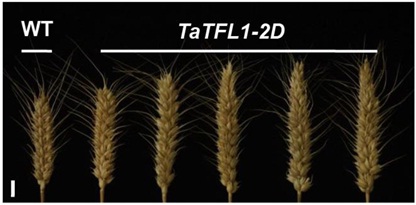Grains of cereal crops provide a major source of human diet and nutrition. Improving grain yield is a primary objective during crop domestication and a major goal of crop breeding program. Spike architecture dictates the capacity for seed production in cereal crops, including wheat, the world’s most widely grown cereal. Like maize and rice, wheat yield per plant largely depends on the number of florets per spike, and thus spike architecture. Comparing with rice, maize and barley, our understanding of wheat spike development remains rudimentary at the molecular level.
Researchers in Dr. JIAO Yuling’s group from the Institute of Genetics and Developmental Biology, Chinese Academy of Sciences, and Dr. WANG Xiangfeng’s group from China Agricultural University recently used a population associative transcriptomic approach in combination with coexpression network analysis to infer the identities of genes related to spike complexity
They selected 90 winter wheat varieties for transcriptome association analysis to identify the gene regulatory network underlying the development of spike architecture. They detected one coexpression core module, which was enriched in floral development related transcription factors.
As a proof-of-concept, they selected ten genes for experimental verification, and found that overexpression of TaTFL1 increased spike complexity, while overexpression of TaPAP2 or TaVRS1 reduced spike complexity. Notably, all these genes have expression correlation with spike complexity.
The above results laid a solid foundation to gain insight into the wheat spike development at the molecular level.
This study entitled “Transcriptome association identifies regulators of wheat spike architecture” has been published online in
Plant Physiology (
DOI: 10.1104/pp.17.00694). The first authors of this work are Dr. WANG Yuange and YU Haopeng of the Jiao lab. JIAO Yuling and WANG Xiangfeng are co-correspondence authors. TONG Yiping’s group and GAO Caixia’s group from the Institutes of Genetics and Developmental Biology also contributed to this research.
This work was supported by the Chinese Academy of Sciences, the Ministry of Agriculture of China, the National Natural Science Foundation of China, the National Program for Support of Top-Notch Young Professionals, and the State Key Laboratory of Plant Genomics.

Figure. Comparison of the spike complexity of KN199 (WT) and transgenic TaTFL1-2D wheat plants. Scale bars, 1 cm (Image by IGDB)
Contact:
Dr. JIAO Yuling



